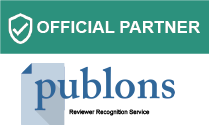Abstract
The COVID-19 pandemic prompted the expectation of facemasks in fitness facilities during exercise. However, the physiological and perceptual responses of wearing a facemask during exercise has not been fully investigated. The purpose of this study was to determine the effect of facemasks on selected physiological and subjective variables during exercise. Using a crossover design, males (n =8) and females (n=7) and were randomly assigned to (1) a surgical facemask, (2) a cloth face mask, and (3) no mask and completed Bruce Protocol maximal graded treadmill tests 48 hrs apart. Collected data included heart rate (HR), oxyhemoglobin saturation (SpO2), rating of perceived dyspnea (DYS), perceived rate of exertion (RPE) and time to exhaustion (TTE). No significant (p>0.05) differences were found for HR or SpO2 at any of the treadmill stages. DYS was higher with both masks compared to no mask, but only significant (p < 0.05) between the cloth and no mask conditions in stages 2 and 3. RPE was greater in both mask conditions compared to no masks, but only significantly greater between the cloth mask and no mask conditions in stage 3. No significant differences were found for TTE among the conditions. Wearing face masks during exercise and has little effect on HR, SpO2, or TTE. However, facemasks may negatively influence DYS and RPE contributing to feelings of exhaustion. Participants should be made aware that the discomfort of wearing a mask during exercise will not hamper performance.
Keywords
Face mask, Exercise, Heart rate, Treadmill,References
- Amput, P., Wongphon, S. (2022), Effects of wearing face masks on cardiorespiratory parameters at rest and after performing the six-minute walk test in older adults. Geriatrics, 7(3), 62.
- Cheng, K.K, Lam, T.H, Leung, C.C. (2022), Wearing face masks in the community during the COVID-19 pandemic: altruism and solidarity. Lancet, 399, 39-40.
- Darnell, M.E., Quinn, T.D, Carnahan, S.P, Carpenter, T, Meglino, N., Yorio, P.L., Doperak, J.M. (2022), Effect of Cloth Masks and N95 Respirators on Maximal Exercise Performance in Collegiate Athletes. International Journal of Environmental Research and Public Health.19(13), 7586.
- do Prado, D.M.L., Silvino, V., Motta-Santos, D. (2022), Clinical effect of the protective face mask on cardiorespiratory response during aerobic exercise. Clinical and Experimental Pharmacology and Physiology, 49(4) 453-461.
- Doherty, C. J., Mann, L. M., Angus, S. A., Chan, J. S., Molgat-Seon, Y., & Dominelli, P. B. (2021). Impact of wearing a surgical and cloth mask during cycle exercise. Applied Physiology, Nutrition, and Metabolism, 46(7), 693-703.
- Driver, S., Reynolds, M., Brown, K., Vingren, J. L., Hill, D. W., Bennett, M. Bennett, M, Gilliland, T., McShan, E., Callender, L., Reynolds, E., Borunda, N., Mosolf, J., Cates, C., Jones, A., (2021), Effects of wearing a cloth face mask on performance, physiological and perceptual responses during a graded treadmill running exercise test. British Journal of Sports Medicine, 56, 107-113.
- Dubé, F., Croteau, E., Richard, G., Allard, C., Mampuya, W.M. (2022), Exercise Capacity and Perceived Exertion on Treadmill Stress Test Performed While Wearing vs Without a Surgical Mask: A Randomized Clinical Trial in Healthy Adults. CJC Open. 4(12), 1036-1042.
- Egger, F., Blumenauer, D., Fischer, P., Venhorst, A., Kulenthiran, S., Bewarder, Y., Zimmer, A., Böhm, M., Meyer, T., Mahfoud, F. (2021), Effects of face masks on performance and cardiorespiratory response in well-trained athletes. Clinical Research in Cardiology, 111, 264-271.
- Epstein, D., Korytny, A., Isenberg, Y., Marcusohn, E., Zukermann, R., Bishop, B., Minha, S., Raz, A., Miller, A., (2021), Return to training in the COVID‐19 era: The physiological effects of face masks during exercise. Scandinavian Journal of Medicine & Science in Sports, 31(1), 70-75.
- Fikenzer, S., Uhe, T., Lavall, D., Rudolph, U., Falz, R., Busse, M., Hepp, P., Laufs, U. (2020), Effects of surgical and FFP2/N95 face masks on cardiopulmonary exercise capacity. Clinical Research in Cardiology, 109, 1522–1530.
- Haraf, R. H., Faghy, M. A., Carlin, B., Josephson, R. A. (2021), The physiological impact of masking is insignificant and should not preclude routine use during daily activities, exercise, and rehabilitation. Journal of Cardiopulmonary Rehabilitation and Prevention, 41(1), 1-5.
- Hoffman, C. (2021), Effect of a facemask on heart rate, oxygen saturation and rate of perceived exertion. German Journal of Sports Medicine. 72(7), 359-363.
- Hopkins, S.R., Dominelli, P.B., Davis, C.K., Guenette, J.A., Luks, A.M., Molgat-Seon, Y., Carlos Sá, R., Sheel, A.W., Swenson, E.R., Stickland, M.K. (2021). Face masks and the cardiorespiratory response to physical activity in health and disease. Annals of the American Thoracic Society, 18(3), 399-407.
- Lässing, J., Falz, R., Pökel, C., Fikenzer, S., Laufs, U., Schulze, A., Hölldobler, N., Rüdrich, P. & Busse, M. (2020), Effects of surgical face masks on cardiopulmonary parameters during steady state exercise. Scientific Reports, 10(1), 22363.
- Liew, C.H., Flaherty, G.T. (2020), Unmasking the myths surrounding use of barrier face coverings during the Covid-19 pandemic. International Journal of Travel Medicine and Global Health, 8(4) 134-136.
- Shaw, K., Butcher, S., Ko, J., Zello, G. A., Chilibeck, P. D. (2020), Wearing of cloth or disposable surgical face masks has no effect on vigorous exercise performance in healthy individuals. International Journal of Environmental Research and Public Health, 17(21),
- Watts, S. Why it feels like you can’t breathe inside your facemask – and what to do about it. Discover. https://www.discovermagazine.com/health/why-it-feels-like-you-cant-breathe-inside-your-face-mask-and-what-to-do September 14, 2020. Accessed, May 2, 2023.
 |
|


 Articles
Articles

